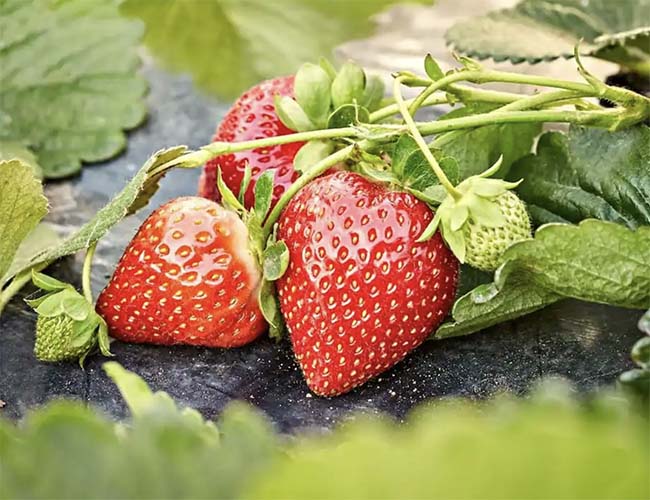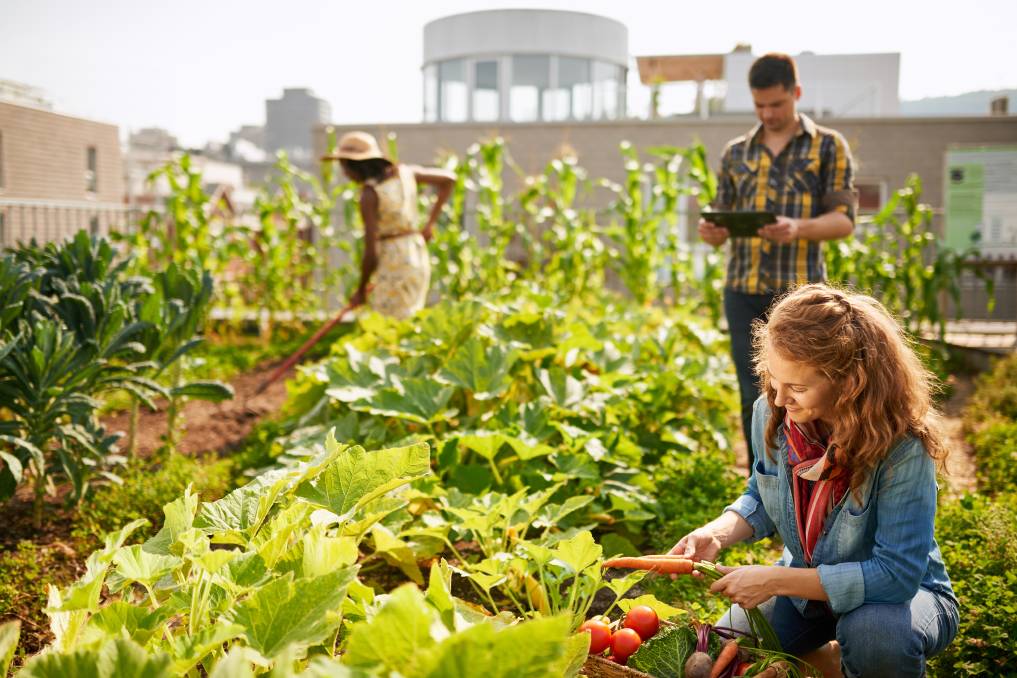Growing strawberries can be a rewarding experience for any gardener. Whether you are a seasoned pro or a beginner, there are always tips and tricks to help you get the most out of your strawberry plants.
In this article, we will share our top 5 tips for growing strawberries that will help you produce a bountiful harvest.
Choosing the Right Variety
When it comes to growing strawberries, selecting the right variety is crucial to ensure a bountiful harvest. Here are some factors to consider when choosing the perfect strawberry variety for your garden.
Factors to Consider
1. Climate and Location
Different strawberry varieties thrive in different climates and locations. For instance, if you live in a warm climate, you may want to consider planting everbearing or day-neutral varieties that can produce fruit throughout the growing season. On the other hand, if you live in a cooler climate, you may want to opt for June-bearing varieties that produce a large crop in early summer.
2. Taste and Texture
Strawberries come in a variety of flavors and textures. Some are sweet and juicy, while others are tart and firm. Consider what type of strawberry you prefer and choose a variety accordingly. Some popular varieties include the sweet and flavorful ‘Chandler’ and the firm and tart ‘Jewel.’
3. Disease Resistance
Certain strawberry varieties are more resistant to diseases such as powdery mildew and verticillium wilt. This can save you time and money in the long run by reducing the need for pesticides and fungicides. Some disease-resistant varieties include ‘Albion’ and ‘Seascape.’
4. Yield and Productivity
If you’re looking to grow strawberries for commercial purposes or to sell at the local farmers’ market, you may want to choose a variety that is known for its high yield and productivity. ‘Seascape’ and ‘Albion’ are popular choices for their high yields and large fruit size.
5. Planting Method
Certain strawberry varieties are better suited for different planting methods. For instance, if you plan to grow strawberries in containers, you may want to choose a variety that is compact and doesn’t spread too much. ‘Tristar’ and ‘Alpine’ are good choices for container gardening, while ‘Honeoye’ and ‘Earliglow’ do well in traditional garden beds.
By considering these factors, you can choose the perfect strawberry variety for your garden and enjoy a plentiful harvest of delicious, juicy fruit.
Preparing the Soil
Soil pH
The first thing to consider when preparing your soil is the pH level. Strawberries prefer a slightly acidic soil with a pH between 5.5 and 6.5. If your soil is too alkaline, you can lower the pH by adding elemental sulfur or ammonium sulfate. If your soil is too acidic, you can raise the pH by adding lime or wood ash.
Soil Amendments
Adding organic matter to your soil is another important step in preparing your soil for strawberries. Organic matter helps to improve soil structure, increase water retention, and provide essential nutrients. Some good sources of organic matter include compost, manure, and shredded leaves.
In addition to organic matter, you may also want to consider adding other soil amendments such as:
- Bone meal: Provides phosphorus for strong root development.
- Blood meal: Provides nitrogen for healthy foliage growth.
- Epsom salt: Provides magnesium for healthy plant growth.
- Greensand: Provides potassium and other trace minerals.
When adding soil amendments, be sure to follow the recommended application rates and mix them thoroughly into the soil.
By taking the time to prepare your soil properly, you can help ensure a healthy, productive strawberry crop.
Planting and Watering
When it comes to growing strawberries, proper planting and watering techniques are crucial to ensure a healthy and fruitful harvest. In this section, we will discuss some essential tips for planting and watering strawberries.
Planting Tips
- Choose the Right Location: Strawberries need at least six hours of direct sunlight each day and prefer well-draining soil. Choose a location that receives ample sunlight and has well-draining soil.
- Prepare the Soil: Before planting, prepare the soil by adding compost or aged manure. This will help improve soil fertility and drainage.
- Plant at the Right Time: The best time to plant strawberries is in the early spring or late fall. Planting in the summer can stress the plants and reduce fruit production.
- Space Plants Properly: Space plants about 12-18 inches apart to allow for proper air circulation and to prevent disease.
Watering Tips
- Water Consistently: Strawberries require consistent moisture to produce juicy, sweet fruit. Water deeply once a week, or more often during hot and dry weather.
- Water at the Right Time: Water early in the morning or in the evening to avoid evaporation and to allow the plants to absorb water before the heat of the day.
- Avoid Overwatering: Overwatering can lead to root rot and other diseases. Make sure the soil is well-draining and avoid watering too frequently.
Fertilizing and Mulching
Fertilizing and mulching are two important aspects that can greatly impact the quality and quantity of your harvest. Here are some tips on how to fertilize and mulch your strawberry plants to ensure a bountiful crop.
Fertilizing Tips
At the beginning of the growing season, it’s important to fertilize your strawberry plants to give them the nutrients they need to grow strong and healthy. We recommend using a balanced fertilizer with equal amounts of nitrogen, phosphorus, and potassium, some like 10-10-10 fertilizers could be a great start at the beginning of the growing season. You can either use a slow-release granular fertilizer or a liquid fertilizer that you apply every two weeks.
When applying fertilizer, be sure to follow the instructions on the package carefully. Over-fertilizing can lead to excessive vegetative growth and reduced fruit production. We recommend applying strawberry fertilizer in the morning or evening when the temperature is cooler to prevent burning the plants.
Mulching Tips
Mulching is an important practice in strawberry cultivation that helps to retain moisture, suppress weeds, and regulate soil temperature. We recommend using organic mulch, such as straw, leaves, or grass clippings, which will break down over time and add nutrients to the soil.
Apply a layer of mulch around the base of the plants, taking care not to cover the crown or leaves. We recommend a thickness of 2-3 inches, which will provide adequate coverage without suffocating the plants. Be sure to replenish the mulch as it breaks down over time.
In addition to organic mulch, you can also use plastic mulch, which is a more effective weed suppressor and can help to warm the soil in early spring. However, plastic mulch does not add nutrients to the soil and can be more expensive than organic mulch.
Pest and Disease Control
Common Pests and Diseases
When growing strawberries, it is important to be aware of the common pests and diseases that can affect your plants. Here are some of the most common ones:
- Strawberry root weevil: This pest can cause damage to the roots of the plant, leading to stunted growth and reduced fruit production.
- Spider mites: These tiny pests can cause yellowing and curling of leaves, as well as webbing on the plant.
- Gray mold: This fungal disease can cause the fruit to rot and turn gray, and can also affect the leaves and stems of the plant.
- Powdery mildew: This fungal disease can cause a white powdery coating on the leaves and fruit, and can also lead to stunted growth and reduced fruit production.
Preventive Measures
To prevent pests and diseases from affecting your strawberry plants, here are some preventive measures you can take:
- Plant disease-resistant varieties: Look for varieties that are resistant to common diseases like gray mold and powdery mildew.
- Practice good sanitation: Remove any dead or diseased plant material from your garden, and avoid overcrowding your plants.
- Use natural pest control methods: Consider using natural methods like insecticidal soap or neem oil to control pests, rather than harsh chemicals.
- Rotate your crops: Avoid planting strawberries in the same area year after year, as this can lead to a buildup of pests and diseases in the soil.
- Provide proper care: Give your plants the proper care they need, including regular watering and fertilization, to help keep them healthy and strong.
By following these tips, you can help prevent pests and diseases from affecting your strawberry plants, and ensure a healthy and bountiful harvest.


